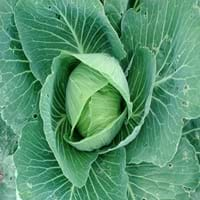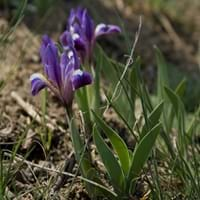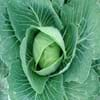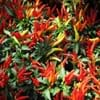Life Span
Annual
Perennial
Origin
Europe
World, Pandemic, North America, Europe, Africa, Asia
Types
Chinese Cabbage, Napa Cabbage
Alizes
Bumblebee Deelite
Maui Moonlight
Langport Wren
Sarah Taylor
Titan's Glory
Thornbird
Jane Phillips
Orinoco Flow
Number of Varieties
Not Available
Habitat
Farms, Fields, Subtropical climates
gardens, Hillside, Riverbanks, Warmer regions, Wet forest
USDA Hardiness Zone
4-7
Not Available
AHS Heat Zone
6-1
Not Available
Sunset Zone
A1, A2, A3, H1, H2, 1a, 1b, 2a, 2b, 3a, 3b, 4, 5, 6, 7, 8, 9, 10, 11, 12, 13, 14, 15, 16, 17, 18, 19, 20, 21, 22, 23, 24
Not Available
Habit
Clump-Forming
Clump-Forming
Minimum Height
Not Available
Minimum Width
Not Available
Flower Color
Yellow
White, Yellow, Blue, Purple, Orange, Pink, Rose, Coral, Peach, Burgundy, Lavender, Plum, Orange Red, Dark Salmon, Bronze, Chocolate, Black
Flower Color Modifier
Bicolor
Bicolor
Fruit Color
Not Available
Not Available
Leaf Color in Spring
Light Green
Not Available
Leaf Color in Summer
Not Available
Not Available
Leaf Color in Fall
Not Available
Not Available
Leaf Color in Winter
Not Available
Light Green
Leaf Shape
Oblong Circular Round
Long Linear
Plant Season
Spring, Summer, Fall, Winter
Not Available
Sunlight
Full Sun, Partial Sun
Full Sun, Partial Sun
Type of Soil
Loam, Sand
Clay, Loam, Sand
The pH of Soil
Neutral
Acidic, Neutral, Alkaline
Soil Drainage
Well drained
Well drained
Bloom Time
Spring, Summer
Not Available
Tolerances
Drought
Drought
Where to Plant?
Container, Ground
Ground, Pot
How to Plant?
From bulbs, Seedlings
From Rhizomes, Stem Planting
Plant Maintenance
Low
Medium
Watering Requirements
Keep ground moist, Keep the ground moist but not water-logged, Requires regular watering
Does not require lot of watering, Keep ground moist, Water when soil is dry
In Summer
Lots of watering
Lots of watering
In Spring
Moderate
Moderate
In Winter
Average Water
Average Water
Soil pH
Neutral
Acidic, Neutral, Alkaline
Soil Type
Loam, Sand
Clay, Loam, Sand
Soil Drainage Capacity
Well drained
Well drained
Sun Exposure
Full Sun, Partial Sun
Full Sun, Partial Sun
Pruning
Remove damaged leaves, Remove dead leaves
Remove dead leaves, Remove dead or diseased plant parts, Requires very little pruning
Fertilizers
Nitrogen, Phosphate, Well-rotted manure
All-Purpose Liquid Fertilizer
Pests and Diseases
Alternaria Leaf Spot, Anthracnose, Bacterial soft rot, Blackleg, Damping off, Damping-off, Downy mildew, Flea beetle, Flea Beetles, Fungal Diseases, fungus, Red blotch, Watery soft rot
Bacterial Diseases, Fungal Diseases, Viruses
Plant Tolerance
Drought, Heat Tolerance
Drought
Flower Petal Number
Single
Single
Fragrant Bark/Stem
Yes
No
Foliage Texture
Coarse
Medium
Foliage Sheen
Not Available
Matte
Attracts
Beetles, Flies, Insects
Bees, Butterflies
Allergy
Throat itching
Asthma
Aesthetic Uses
Not Available
Beautification, Showy Purposes
Beauty Benefits
Not Available
Not Available
Environmental Uses
Air purification, Food for animals, Food for insects
Air purification
Medicinal Uses
Anti-oxidant, Antioxidants, Digestion problems, Low calories, Nutrients, Skin Disorders
Not Available
Part of Plant Used
Fruits, Leaves
Flowers, Leaves, Rhizomes, Root
Other Uses
Food for animals, Used As Food, Used for its medicinal properties, Used as a spice, Used in salads
Making Perfumes, Oil is used for aromatherapy, Used as a sedative, Used as essential oil
Used As Indoor Plant
No
No
Used As Outdoor Plant
Yes
Yes
Garden Design
Container, Edible, Herb / Vegetable
Bedding Plant, Cutflower, Mixed Border, Rock Garden, Wall
Botanical Name
BRASSICA rapa( Pekinensis Group)
IRIS
Common Name
Celery Cabbage, Napa Cabbage
Iris
In Hindi
अजवाइन गोभी
Iris
In German
Sellerie Kohl
Iris
In French
céleri chou
Iris
In Greek
σέλινο Λάχανο
Ίρις
In Portuguese
aipo couve
Íris
In Polish
seler Kapusta
Irys
In Latin
Brassica apium
Iris
Phylum
Magnoliophyta
Tracheophyta
Class
Magnoliopsida
Liliopsida
Order
Brassicales
Asparagales
Family
Brassicaceae
Iridaceae
Clade
Angiosperms
Angiosperms, Monocots
Subfamily
Not Applicable
Iridoideae
Number of Species
Not Available
Importance of Celery Cabbage and Iris
Want to have the most appropriate plant for your garden? You might want to know the importance of Celery Cabbage and Iris. Basically, these two plants vary in many aspects. Compare Celery Cabbage and Iris as they differ in many characteristics such as their life, care, benefits, facts, etc. Every gardener must at least have the slightest clue about the plants he wants to plant in his garden. Compare their benefits, which differ in many ways like facts and uses. The medicinal use of Celery Cabbage is Anti-oxidant, Antioxidants, Digestion problems, Low calories, Nutrients and Skin Disorders whereas of Iris is Not Available. Celery Cabbage has beauty benefits as follows: Not Available while Iris has beauty benefits as follows: Not Available.
Compare Facts of Celery Cabbage vs Iris
How to choose the best garden plant for your garden depending upon its facts? Here garden plant comparison will help you to solve this query. Compare the facts of Celery Cabbage vs Iris and know which one to choose. As garden plants have benefits and other uses, allergy is also a major drawback of plants for some people. Allergic reactions of Celery Cabbage are Throat itching whereas of Iris have Asthma respectively. Having a fruit bearing plant in your garden can be a plus point of your garden. Celery Cabbage has no showy fruits and Iris has no showy fruits. Also Celery Cabbage is not flowering and Iris is flowering. You can compare Celery Cabbage and Iris facts and facts of other plants too.





